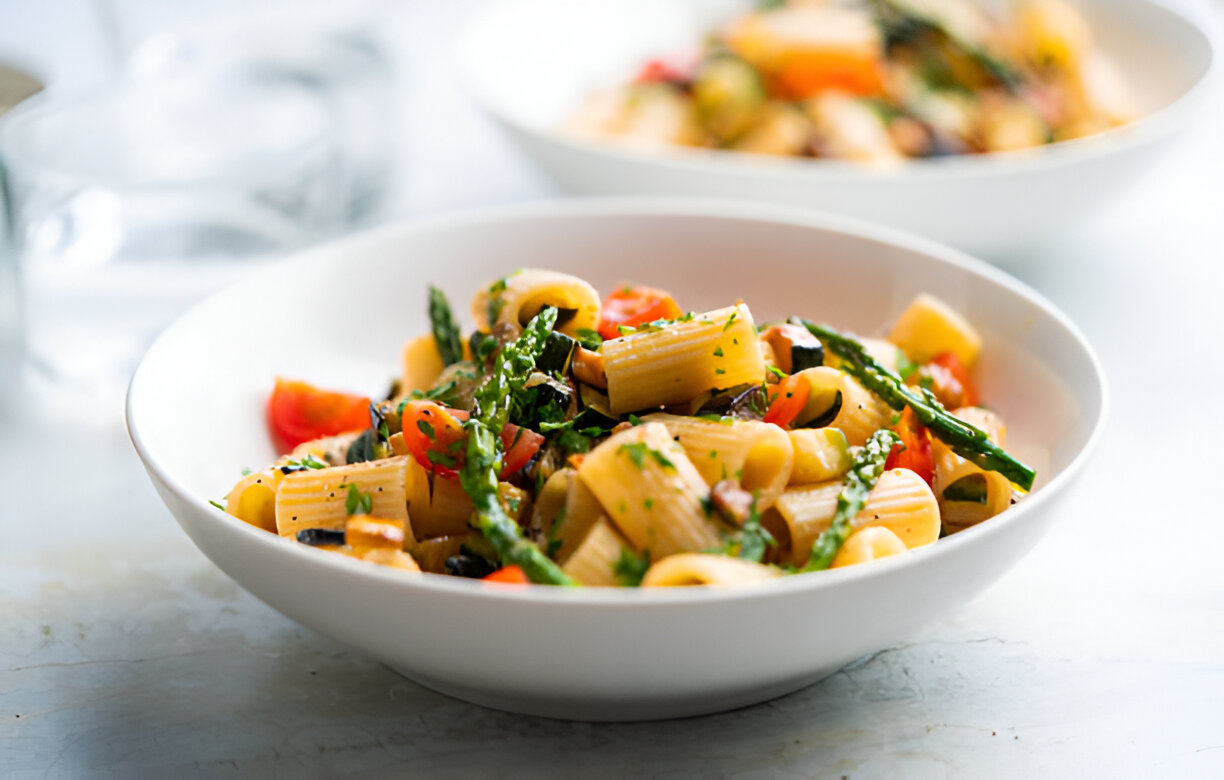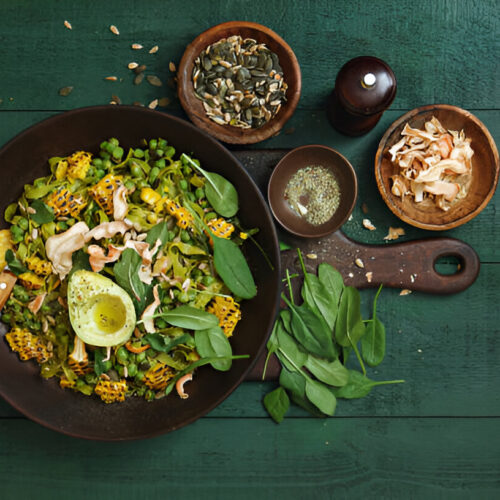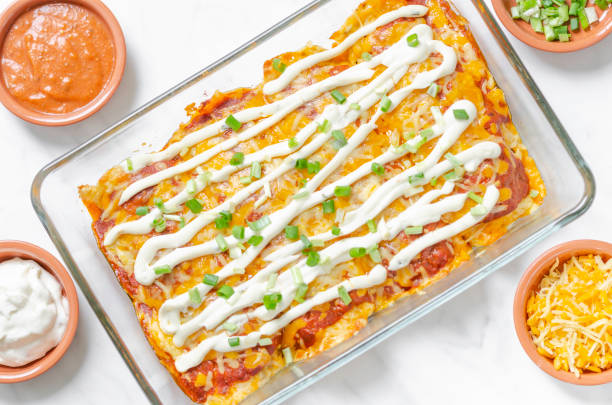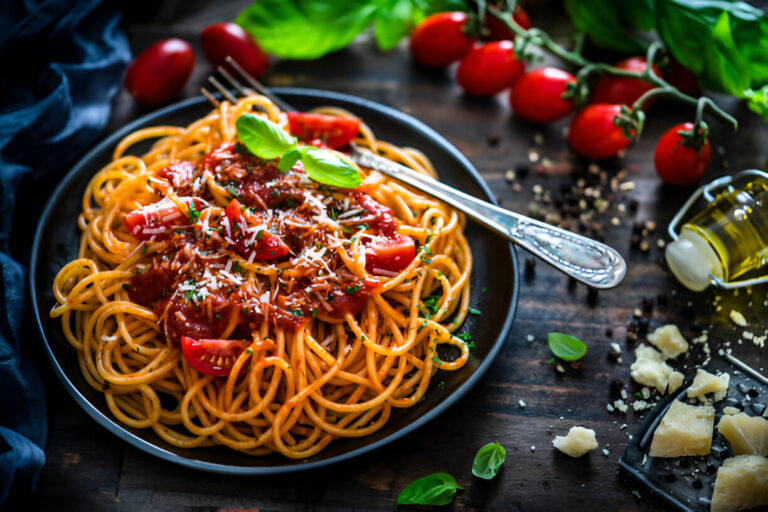Pasta Healthy Recipes: Wholesome Dishes for Every Taste
Pasta has long been a beloved staple in many households around the world, cherished for its comforting textures and wide-ranging versatility. From classic spaghetti and meatballs to intricate lasagnas, pasta dishes can cater to almost any palate or occasion. However, it’s essential to recognize that not all pasta preparations are created equal. As health-conscious eating becomes increasingly important, making informed choices about the types of pasta and accompanying ingredients can turn traditional recipes into nourishing meals without compromising flavor.
This article delves into the realm of healthy pasta recipes, guiding you through the nutritional benefits of pasta, how to select healthier options, and incorporating an array of wholesome ingredients. Whether you’re looking to enjoy a guilt-free version of your favorite comfort food or seeking inspiration to create innovative dishes, you’ll find a variety of recipes and tips aimed at enhancing the healthfulness of your pasta meals. Prepare to explore creative combinations that can add a nutritional punch to your plate while still delivering the comforting satisfaction that pasta lovers crave.

## Nutritional Benefits of Pasta
Pasta is often considered a comfort food, but it also offers a range of nutritional benefits that can contribute to a balanced diet. The key lies in understanding the differences between whole grain and refined pasta, as well as the essential nutrients that pasta provides.
### Whole Grain vs. Refined Pasta
Whole grain pasta is made from the entire grain, including the bran, germ, and endosperm, which makes it higher in fiber and nutrients compared to refined pasta. Refined pasta, on the other hand, is processed to remove the bran and germ, leading to a loss of valuable nutrients. The nutritional profiles differ significantly:
- Whole Grain Pasta: Higher in fiber, vitamins, and minerals; supports digestive health and can aid in weight management.
- Refined Pasta: Lower in fiber; may lead to quicker spikes in blood sugar levels.
Choosing whole grain pasta not only enhances your dish’s nutritional value but also adds a hearty flavor and texture that many find appealing.
### Key Nutrients in Pasta
Pasta is not just a source of carbohydrates; it contains several key nutrients that can benefit health:
- Carbohydrates: The primary energy source for the body, essential for fueling daily activities and workouts.
- Protein: Helps in muscle repair and growth, especially when paired with lean proteins in pasta dishes.
- Fiber: Aids in digestion and can help maintain a healthy weight by promoting feelings of fullness.
Incorporating pasta into your diet can provide these essential nutrients, especially when prepared with wholesome ingredients.
### How to Choose Healthy Pasta
When selecting pasta, consider the following tips to make healthier choices:
- Selecting Whole-Grain Options: Look for pasta labeled “100% whole grain” to ensure maximum nutritional benefit.
- Gluten-Free Alternatives: Explore options like zucchini noodles, chickpea pasta, or lentil pasta, especially if you have gluten sensitivities.
By being mindful of your pasta choices, you can enjoy delicious meals while also supporting your health.
## Healthy Pasta Ingredients
To elevate the healthfulness of your pasta dishes, consider including a variety of wholesome ingredients. Here are some categories to focus on:
### Vegetables
Adding vegetables to your pasta not only boosts nutrition but also enhances flavor. Here are some of the best vegetables to incorporate:
- Spinach: Packed with vitamins A, C, and K, along with iron and calcium.
- Cherry Tomatoes: Rich in vitamins C and K, as well as antioxidants.
- Bell Peppers: A great source of vitamins A and C, known for their bright, sweet flavor.
### Lean Proteins
Incorporating lean proteins can transform your pasta dish into a balanced meal. Consider the following:
- Chicken: A protein-rich option; can be grilled or sautéed for added flavor.
- Turkey: A lean alternative with lower fat content.
- Shrimp: A quick-cooking protein that pairs well with pasta and adds a touch of elegance.
- Plant-Based Options: Incorporate beans, lentils, or tofu for a vegetarian protein boost.
### Healthy Fats
Don’t forget to include healthy fats in your pasta dishes. Healthy fats can improve the absorption of fat-soluble vitamins and add richness to your meal:
- Olive Oil: A heart-healthy fat that can be used for sautéing or as a dressing.
- Avocados: Creamy and full of nutrients, adding them to pasta can create a delicious and healthy dish.
- Nuts: Almonds, walnuts, or pine nuts can provide crunch and additional flavor.
By selecting nutritious ingredients and balancing flavors, you can create healthy, satisfying pasta dishes that cater to a variety of dietary needs and preferences.

Healthy Pasta Recipe Ideas
1. Whole Wheat Pasta Primavera
This vibrant dish is a delightful way to incorporate a variety of vegetables into your meal. It’s not only colorful but also packed with nutrients.
Ingredients
- 12 oz. whole wheat pasta
- 1 cup cherry tomatoes, halved
- 1 bell pepper, sliced
- 1 zucchini, sliced
- 2 tablespoons olive oil
- Salt and pepper to taste
- Fresh basil for garnish
Directions
- Cook the pasta according to package instructions. Drain and set aside.
- In a large skillet, heat olive oil over medium heat.
- Add the vegetables and sauté until tender.
- Toss cooked pasta with the sautéed vegetables, season with salt and pepper.
- Garnish with fresh basil before serving.
Cooking Advice: Feel free to mix in seasonal vegetables for added flavor.
2. Lemon Garlic Shrimp Pasta
This light and zesty dish is perfect for seafood lovers, combining the flavors of lemon and garlic for a refreshing meal.
Ingredients
- 8 oz. whole wheat spaghetti
- 1 lb. shrimp, peeled and deveined
- 3 cloves garlic, minced
- Juice of 1 lemon
- Zest of 1 lemon
- 2 tablespoons olive oil
- Salt, pepper, and parsley for garnish
Directions
- Cook spaghetti according to package instructions and set aside.
- In a skillet, heat olive oil over medium heat; add garlic and sauté until fragrant.
- Add shrimp and cook until pink, adding lemon juice and zest.
- Combine with spaghetti and toss. Garnish with parsley.
Cooking Advice: Use fresh herbs to enhance flavor without extra calories.
3. Spinach and Ricotta Stuffed Shells
This comforting dish is a great way to sneak in some greens while enjoying the creamy goodness of ricotta.
Ingredients
- 20 jumbo pasta shells
- 1 cup ricotta cheese
- 2 cups spinach, cooked and chopped
- 1 jar marinara sauce
- 1 cup shredded mozzarella cheese
Directions
- Preheat oven to 375°F (190°C).
- Cook pasta shells according to packet; drain and cool.
- Mix ricotta, spinach, and half of the marinara sauce.
- Fill shells with mixture, place in baking dish, and cover with remaining marinara and mozzarella.
- Bake for 20 minutes until bubbly.
Cooking Advice: Top with a sprinkle of parmesan for added flavor.
4. Chickpea Pasta Salad with Avocado Dressing
This refreshing pasta salad is perfect for a quick lunch or a side dish at dinner, highlighting the benefits of chickpea pasta.
Ingredients
- 8 oz. chickpea pasta
- 1 cup cherry tomatoes, halved
- 1 cucumber, diced
- 1 avocado
- 2 tablespoons lemon juice
- Salt, pepper, and fresh herbs for garnish
Directions
- Cook chickpea pasta according to package; drain and cool.
- Blend avocado with lemon juice, salt, and pepper.
- Combine pasta, tomatoes, cucumber, and avocado dressing.
- Serve chilled with fresh herbs on top.
Cooking Advice: Great for meal prep; it stays fresh in the fridge for days.
5. Zucchini Noodles with Pesto
This low-carb alternative to traditional pasta offers a delightful and healthy twist, especially for those seeking to reduce their carbohydrate intake.
Ingredients
- 4 medium zucchinis, spiralized
- 1 cup basil pesto
- 1 cup cherry tomatoes, halved
- Grated parmesan for serving
Directions
- Spiralize zucchini into noodles.
- Heat pesto in a pan and add zucchini noodles; sauté for 2-3 minutes until tender.
- Stir in cherry tomatoes and serve with parmesan.
Cooking Advice: Adjust cooking time for desired noodle texture.
6. Spicy Garlic Pasta with Broccoli
This spicy and savory dish is both satisfying and simple, making it a fantastic choice for a weeknight meal.
Ingredients
- 8 oz. spaghetti
- 2 cups broccoli florets
- 4 cloves garlic, minced
- 1/2 teaspoon red pepper flakes
- 2 tablespoons olive oil
- Salt and pepper to taste
Directions
- Cook spaghetti according to package. Add broccoli in the last 3 minutes to blanch.
- In a skillet, heat olive oil over medium heat; sauté garlic and red pepper flakes.
- Combine drained pasta and broccoli with the garlic mixture.
Cooking Advice: Substitute broccoli with any favorite leafy greens.
Tips for Making Pasta Healthier
Portion Control
Managing portion sizes is crucial for maintaining a balanced diet. Aim to fill half your plate with vegetables and use whole grain pasta in minimal amounts to create a satisfying meal.
Substituting Ingredients
Consider using healthier sauces, such as tomato-based ones instead of cream-based sauces. Incorporating more vegetables into your pasta can also help increase the dish’s nutritional profile.
Cooking Methods
Choose cooking methods that preserve nutrients, such as steaming or sautéing vegetables instead of frying. This approach not only improves healthfulness but also enhances the natural flavors of your ingredients.
FAQs Section
1. Is pasta healthy when made with whole grains?
Yes! Whole grain pasta retains more nutrients and fiber than refined pasta, promoting better digestion and overall health benefits.
2. How can I add more vegetables to my pasta?
Add sautéed or roasted vegetables directly to your pasta dishes, or serve pasta atop a bed of fresh greens for added nutrition.
3. Are there gluten-free pasta options?
Yes, gluten-free alternatives such as chickpea noodles, lentil pasta, and spiralized vegetables like zucchini can be delicious substitutes for traditional pasta.
4. Can pasta be part of a weight loss diet?
Yes, using whole grain pasta in moderation, combined with lots of vegetables and lean proteins, can support weight management when portion sizes are controlled.
5. What sauces can I use for healthy pasta dishes?
Healthy sauce alternatives include homemade pesto made from fresh herbs, light tomato marinara, or a simple olive oil and garlic dressing.
Conclusion
Recap the benefits of choosing healthy pasta recipes. Encourage readers to experiment with their own creations and invite engagement through comments or sharing personal recipes.

pasta healthy recipes
Equipment
- 1 large pot
- 1 colander
- 1 large skillet
- 1 wooden spoon
- 1 measuring cups and spoons
- 1 cutting board
Ingredients
- 12 ounces whole wheat spaghetti
- 2 tablespoons olive oil
- 4 cloves garlic, minced
- 1 pint cherry tomatoes, halved
- 6 cups fresh spinach, roughly chopped
- 1 teaspoon salt
- 1/2 teaspoon black pepper
- 1/4 teaspoon red pepper flakes optional
- 1/4 cup grated Parmesan cheese for serving, optional
Instructions
- Bring a large pot of salted water to a boil. Once boiling, add the whole wheat spaghetti and cook according to the package instructions until al dente, usually about 9-11 minutes. Reserve 1 cup of the pasta cooking water, then drain the pasta in a colander and set aside.
- In a large skillet, heat the olive oil over medium heat. Add the minced garlic and sauté for about 1 minute until fragrant.
- Add the halved cherry tomatoes to the skillet and cook for 3-4 minutes, until they start to soften.
- Stir in the chopped spinach, salt, black pepper, and red pepper flakes (if using). Cook for another 2-3 minutes until the spinach wilts.
- Add the cooked spaghetti to the skillet, tossing everything together. If the mixture seems dry, add some of the reserved pasta cooking water a little at a time until you reach your desired consistency.
- Serve immediately, topped with grated Parmesan cheese if desired.
- For an extra boost of protein, consider adding grilled chicken or chickpeas to the dish.
- You can also swap out the spinach for other leafy greens like kale or arugula according to your preference.
- This dish is best enjoyed fresh but can be stored in the refrigerator for up to 3 days. Reheat gently on the stove or in the microwave.







